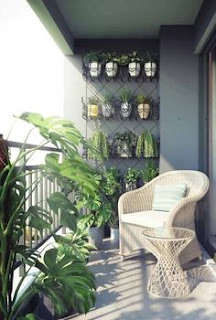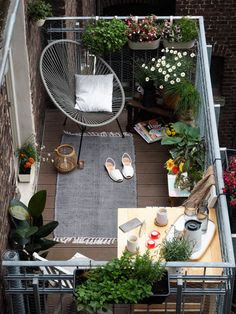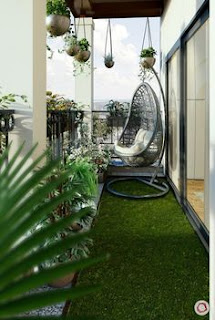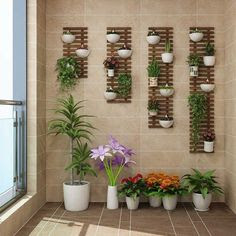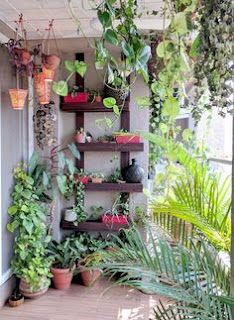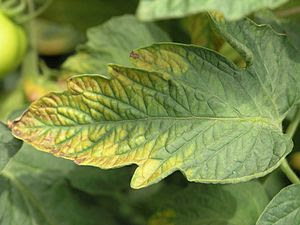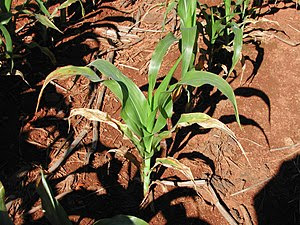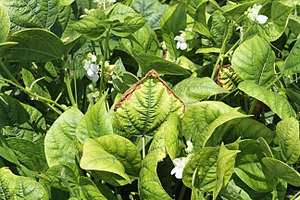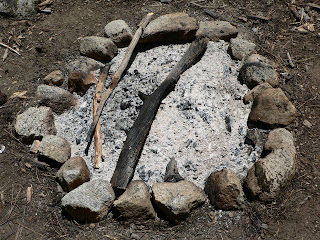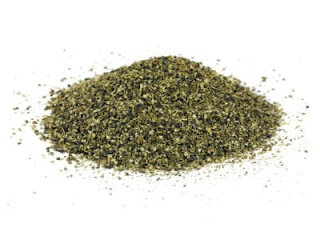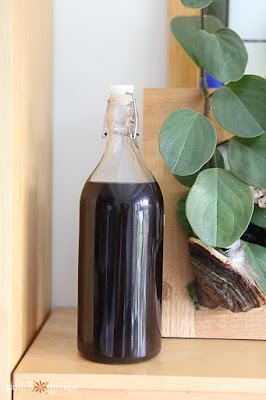Garden ideas for home:
Most of us who live in apartments love to have a garden, but space constraint is one of the major blocks that makes it almost impossible. One good idea to make this dream of having a garden come true for those who live in cities and highly crowded apartments is to make a small balcony garden. When it comes to garden ideas for home, interesting and attractive ideas are always sought for.
These garden ideas are easy to implement DIY garden projects with a minimal budget. Terrace garden ideas for home are also becoming more and more popular. But, those who cannot implement the roof garden idea for home, such as those living in a rental house or in an apartment can go for balcony garden ideas for home.
Small balcony garden ideas for home:
There are various garden design ideas including vertical garden ideas for home. Here are 20 best, attractive easy to make small balcony garden ideas for home.
If you are a lover of a lot of plants and would like to have a jungle look in your home, then this particular garden idea for your balcony will make your desire come true.
If you want to give your balcony garden a trendy look, with vertical planter idea and a good place to relax with your family, then designing your balcony like this will get you a lot of space to sit and relax amidst plants.
You can make your small balcony look much more spacious by using the hanging baskets on your railings, or by making the space on the outer side of the railing your planter space.
Use the extra vertical space on the side walls to have beautiful hanging plants that add charm to your balcony garden.
A balcony that receives good sunlight can be designed with a mix of sun loving outdoor plants and indoor plants. This simple balcony garden gives a lot of space to relax as well.
If you are a beginner gardener, and want to set up a balcony garden, then it is quiet easy to start with easy to grow plants that can be placed on the vertical space on the wall. Placing the plants on the vertical garden space will also help you to monitor and care them easily.
If you love a clean look and a minimalist approach, then the garden design idea above will be highly suitable for you.
To give a simple neat and trendy look to your balcony using wooden planks and wooden planters on the corners will give an attractive look to your balcony garden.
If you are willing to spend an extra budget for your balcony garden set up, then using some lights and wall hangings in your balcony garden will add an extra charm to your home.
Making a green wall idea for your balcony garden in an excellent garden idea for home. It gives that fresh look and feel to your home.
For those who love a lot of flowers adding perennial flowering plants to your balcony will make your sit-out look bright and colourful to enjoy your tea time.
Even the smallest, narrow balcony can be made look green with an artificial grass on the floor and plants in hanging pots.
A simple, yet rich look to your balcony can be given by using this tree branch garden design idea for your balcony.
If you are not some one who would like to do a lot of work and yet want to make your balcony look beautiful with plants, then this kind of design is for you.
A flower bed on a raised balcony floor kind of a look can add more colours and beauty to your balcony. The actual balcony space can be used to design a sitting space to enjoy the beauty of the flowering plants in your garden.
If you want to have all sorts of plants and shrubs in your garden and have only the balcony space to make your garden, then this kind of an design will allow you to place even shrubs that look like trees.
Gardening for beginners can be made very easy with this kind of a balcony garden design. Flowering plants and easy to care plants can boost up your gardening passion.
A lot of hanging plants on your balcony terrace can add more lush green look to your balcony garden.
A simple elegant garden design for your balcony will make you fresh and will look cool.
The creepers that can be planted in y our balcony space will add shade and green look to your balcony, giving it a park like look to your home.






